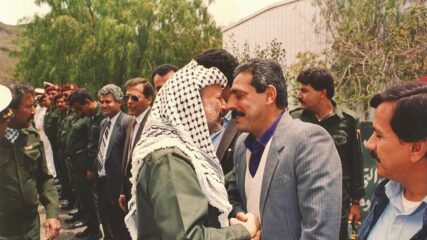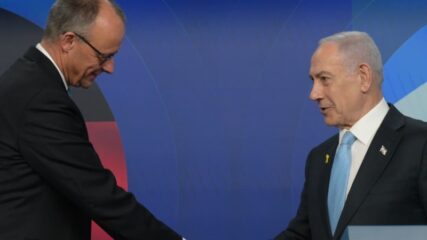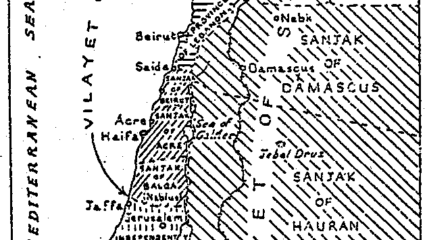Kenneth Stein, “Rural Change and Peasant Destitution: Contributing Causes to the Arab Revolt in Palestine, 1936-1939,” John Waterbury and Farhad Kazemi (eds.), Peasants and Politics in the Modern Middle East, Florida International University Press (1989), pp. 143-170.
From 1931 onward, the daily press in Palestine predicted an ominous Palestinian Arab political future, attacking Arab leaders for inaction or ineptitude and recounting the economic plight of the peasantry almost daily. Anti-Zionist sentiment intensified among Arab Palestinians, whose antagonism against HMG broadened because of its policy reversal. Antipathy for Zionism and HMG was nurtured by fears generated by the dramatic increments of Jewish immigration and land acquisition. Palestinian anxiety about the future was exacerbated by HMG’s public but unsuccessful six-year effort to resettle 1,200 Wadi Hawarith Bedouin who had been displaced from their lands near Hadera because of Jewish land acquisition before the 1929 disturbances. By regularly reporting the futile efforts to save land for the Wadi Hawarith Bedouin, the Palestine Arab press further fueled Arab aversion to British equivocation and Jewish settlement. In addition to the absentee landowner selling relatively large land areas to Zionists, there was also the small peasant proprietor selling small parcels with increasing frequency to Jewish buyers because of unbearable economic pressures. Both transactions added uncertainty to the contentious political environment. A sense of dispossession and displacement was real for Palestinians, who saw Zionism as continuous and relentless and the future as impermanent, even hopeless.
In October 1935 at the Jaffa port, a secret arms shipment for Jewish paramilitary forces was discovered, providing “demonstrable proof” to apprehensive Palestinian Arabs of Zionist intentions to dislodge them violently and physically. The next month, Arab leaders representing five political parties formally demanded that the British high commissioner establish a representative government in Palestine, prohibit land sales to Jews and cease Jewish immigration. HMG responded to this request by offering to create a legislative council, a move Palestinian leaders criticized as a transparent scheme that failed to ensure majority Palestinian Arab rule free of either dominant British influence or Jewish involvement. Rather than deriving its authority from the majority Arab inhabitants, 75 percent of Palestine’s population, the legislative council would have been a political instrument of the British high commissioner in Palestine and the Colonial Office in London. In March 1936, HMG recanted approval for this very limited form of self-government when the House of Commons publicly opposed implementing the proposal. No Palestinian self-governing institutions were established.
During the preceding 50 years, Zionists and Palestinian Arabs had struggled physically and emotionally to acquire or retain control of the same coveted land. Within this context, distinctive conditions prefaced the Arab general strike and revolt. The early 1930s witnessed an unprecedented increase in individual Arab fear about the collective future. For the first time, Arabs of all classes were alarmed by the reality of a Jewish National Home established with British assistance. In 1920, 1921, 1929 and 1933, public Arab protest against Zionism had manifested itself in civil disorder. What distinguished the 1936-39 Arab general strike and revolt from the previous communal violence? It was the resolve and maintenance of the revolt’s dependence on the active and intense participation of a segment of Palestine’s rural population. The earlier outbreaks had originated in urban areas and had even been partially instigated by urban notables. In contrast, the 1936-39 revolt originated and was sustained in rural Palestine, with urban political leaders seeking ways to influence uncontrollable bands of roaming peasants.
For the peasantry of Palestine the bleak political future generated despair that their leaders sincerely and carefully nurtured. But my thesis in this essay is that economic and social factors also contributed significantly to the peasantry’s individual motivation to participate in the Arab revolt and general strike. (1) A prolonged economic plight with multiple dimensions had afflicted Palestine’s peasant population, especially in the six years prior to the outbreak of the revolt and general strike. (2) A building anger among the peasantry within Arab villages was directed in general against urban landowning interests and in particular against the grain merchants, moneylenders and landowners who had disadvantaged the peasantry for decades. (3) A penetrating dislike for Zionism had been fueled by increased physical displacement by Jewish immigration and land purchase. (4) A deep disenchantment had set in with HMG for its belated, meager and unsuccessful efforts to rescue the peasantry from its economic cul-de-sac and for failure to sustain the peasant owner and tenant cultivator in agricultural occupations.
Read the Full Article in a Printable PDF







